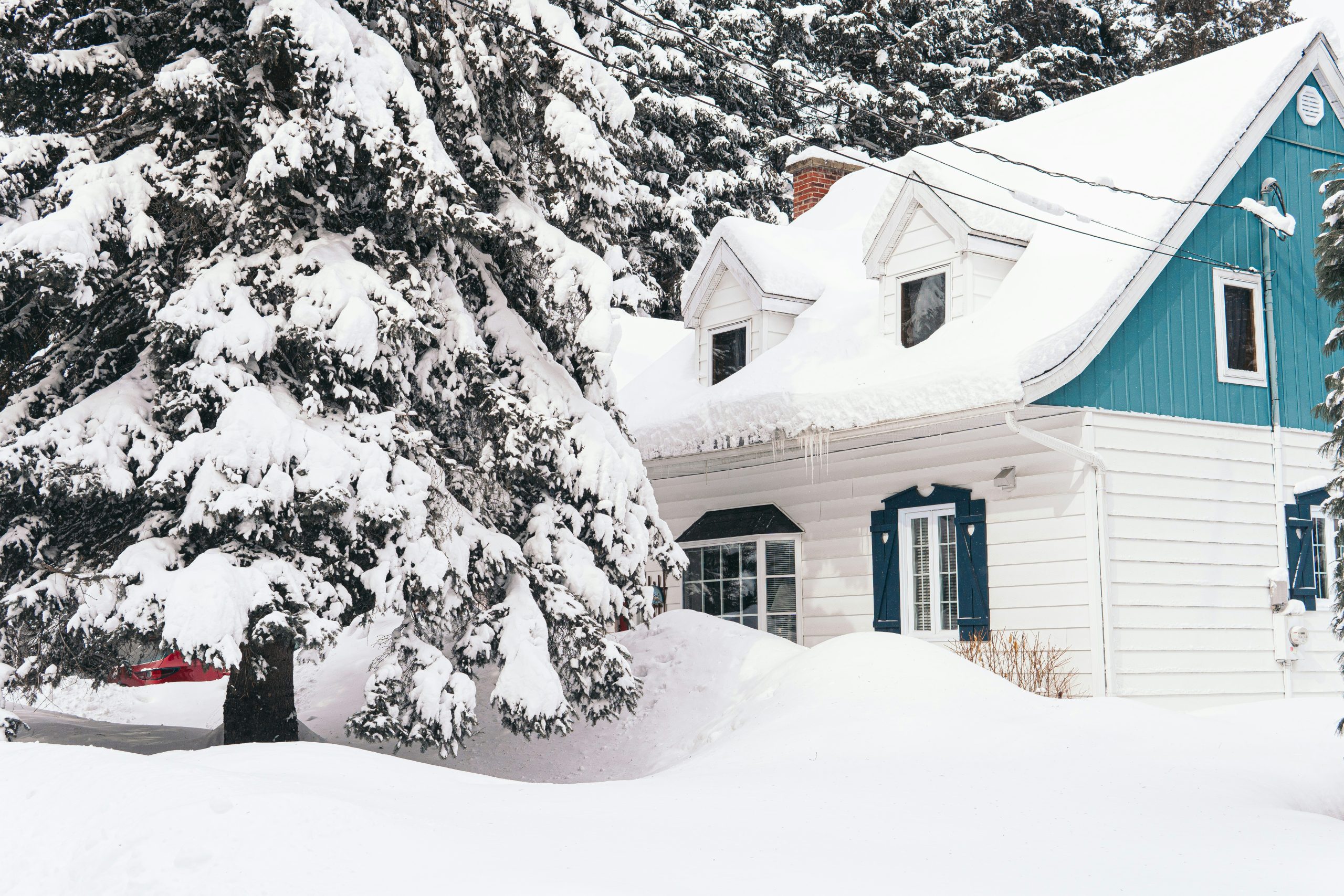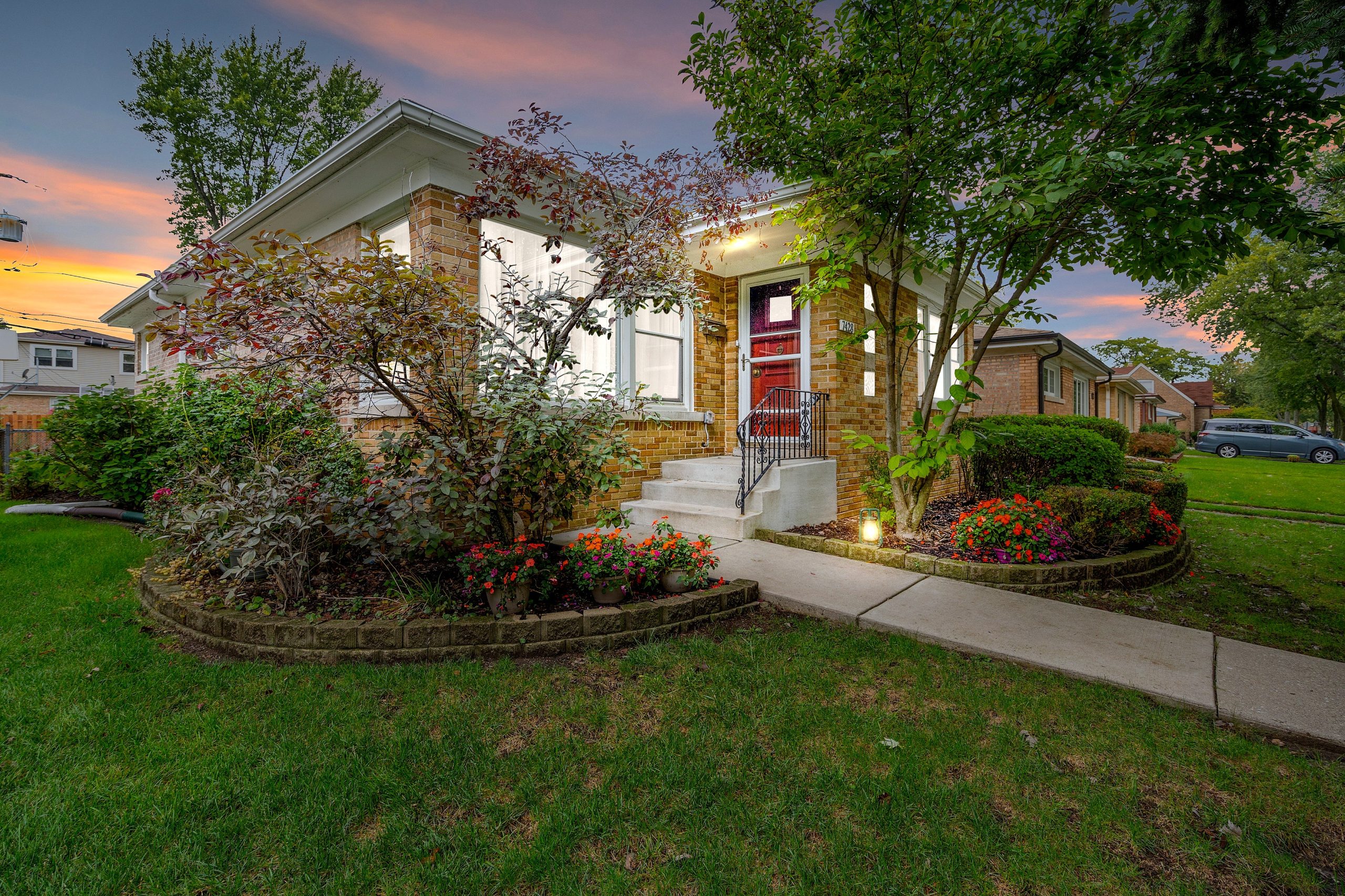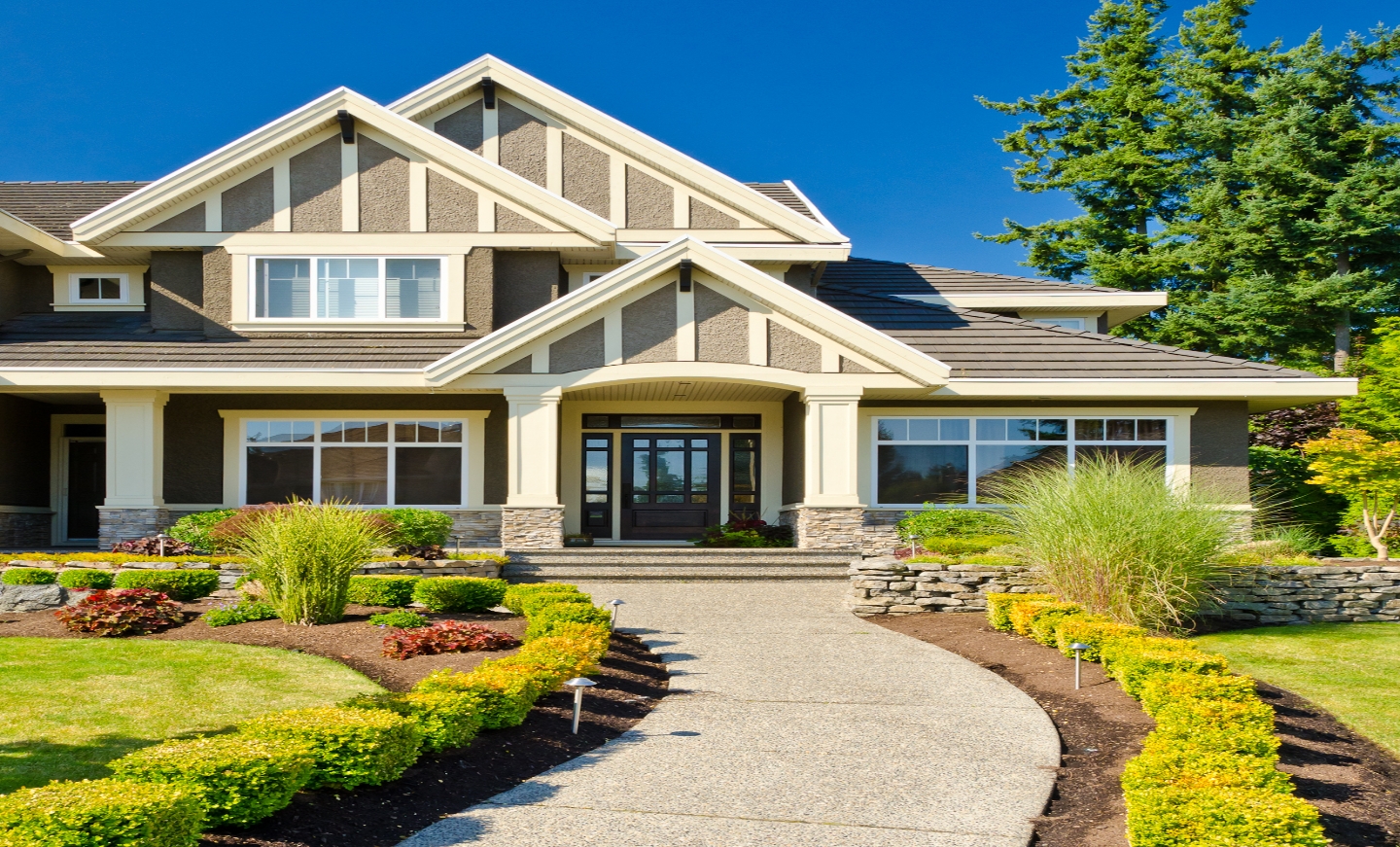Energy usage going up? Try these tips …

Are you avoiding the winter weather and enjoying a cozy night in instead? It’s likely your energy usage is going up while staying warm inside and bingeing the new season of your favorite TV show, according to ComEd. And you’re not alone – the winter months can cause increases in your electric usage, which can impact your energy costs. Seasonal items like space heaters & dehumidifiers can increase your energy use, as can extra lighting to ward off those dark afternoons.
While it might feel like there’s no end in sight for those dark days and chilly temps, ComEd says you can help you cut back on your energy usage without curbing your binge-watching habits with these easy-to-follow tips:
- Clean or replace air filters– Heating and cooling consumes up to 50% of total home energy use in an average household. Dirty air filters make your furnace work harder to circulate air. By cleaning or replacing your filters, you can lower your heating and cooling system energy use by up to 15%.
- Insulate outlets and light switches– Outlets and light switches on the walls that separate your home from the outdoors are often overlooked sources of heating or cooling loss. Insulating these areas can reduce drafts and keep your home more comfortable.
- Clear areas around heating and cooling vents– Furniture, carpets and other objects can block vents and prevent heated or cooled air from traveling. This blockage makes your heating system work harder and prevents rooms from warming up quickly.
- Open your shades on winter days for natural light and warmth–Taking advantage of winter sunlight can help make a dent in your heating costs. Open blinds during the day to provide natural lighting and capture free heat.
- Unplug electronics when they’re not in use–Many gadgets, including televisions, DVR boxes, game consoles and computers, continue to use power even when they are off, so unplug electronics when you don’t need them. For convenience, plug devices into a power strip and turn it off.
This season, ComEd’s Energy Doctors remind customers of the following tips:
- When the sun is shining, open shades on south-facing windows and take advantage of natural light for warmth. Close the shades during the night to help insulate your home.
- Set your thermostat to as low a temperature as possible to maintain personal comfort. The smaller the difference between the indoor and outdoor temperatures, the lower your overall heating bill will be. Overnight, you can also save by turning your thermostat down a few degrees while sleeping.
- Clear area around heating and cooling vents. Furniture, carpets, and other objects can block vents and prevent heated air from circulating in your home.
Information courtesy of Commonwealth Edison, www.comed.com.
Karen Daugerdas, Coldwell Banker Real Estate Broker, 847.494.1102.
What is the #1 Reason People Decide to Move?

Why do people move? If you’re looking for the Number One reason, it may surprise you to know that the National Association of Realtors (NAR) surveys say that the desire to be near family and friends is the number one reason people decide to make a change.
But what are the benefits of moving closer to family?
The desire to live near family and friends affects all types of homebuyers and demographics. While first-time buyers may prioritize affordability and location, many repeat buyers are increasingly focusing on emotional connections and personal relationships.
One noteworthy demographic in this trend is Baby Boomers. Many from this generation have built significant equity in their homes, giving them the flexibility to make choices that prioritize family connections.
Making the decision to move closer to family and friends is not just about goodwill. It brings a whole range of advantages that can enrich your daily life.
With proximity comes the ability to share everyday moments, whether it’s joining family for dinner, attending weekend activities, or simply having a friendly chat next door. The result? Stronger bonds and happier lives.
Living nearby also allows for practical exchanges, whether it’s childcare, borrowing tools for home improvement, or other household necessities. This sense of community can alleviate burden and enhance efficiency in daily tasks.
Moving closer means less driving, too. You can enjoy spontaneous visits, enhancing your quality of life and making it easier to respond to life’s surprises and emergencies.
The emotional support provided by nearby loved ones can make a huge difference during significant milestones and challenging times. Having family nearby fosters a sense of connection and care whether you’re celebrating graduations or lending a hand during tough times.
If you’re contemplating a change, reach out to me at 847.494.1102 or karen.daugerdas@cbrealty.com. I can provide insights into neighborhoods that will bring you closer to the things and people you value most.
Recap of 2024 Buyers, Sellers & the Real Estate Market
2024 was a very challenging year for real estate. The market was frozen, we had low inventory, high prices & high interest rates.
However, the 2nd half of this year began to turn around, although slightly. We saw a little more inventory & interest rates began to loosen.
Where people were “locked” into their existing, low interest rates on the home that they owned, they now have life changes, like retirement, divorce, children being added to or leaving the family, job changes, all of which contribute to home inventory loosening, because people have to move.
Think about it. One year ago we had 8 percent mortgage interest rate. But why didn’t the rates go down when the federal reserve cut the rate?
Well, the Federal Reserve does not control mortgage rates. What was affected by their cut was the rates on your credit cards & the interest you pay, as well as the rates paid on your savings, on what you earn.
We anticipate mortgage interest rates declining slightly next year, maybe to 6 percent. Unfortunately, we also see home prices at the beginning of 2025 staying at the same level or increasing. If you’re considering a move, a purchase or an investment, now may be the time! Contact Karen Daugerdas, Coldwell Banker Real Estate Broker, Pricing Strategy Advisor, Short Sale/Foreclosure Resource, Accredited Buyers’ Representative & Seniors’ Real Estate Specialist for market information & a complimentary home evaluation at 847.494.1102.
Navigating the Uncertain Fall Real Estate Market

The real estate market can often feel like a rollercoaster ride, with its ups & downs creating uncertainty for both buyers & sellers. If you’re feeling anxious about the current market conditions, you’re not alone. Many are grappling with questions about whether it’s the right time to buy or sell.
First of all, we need to understand the factors contributing to the current uncertainty in the real estate market:
- Interest Rates: Fluctuating interest rates can significantly impact mortgage affordability for buyers & the overall market dynamics. As rates rise, monthly payments increase, which can deter potential buyers & slow down sales.
- Economic Indicators: Inflation, job growth, the election & consumer confidence all play a role in shaping the real estate market. A strong job market can lead to increased demand for housing, while economic downturns can have the opposite effect.
- Supply & Demand: Inventory levels & buyer demand can vary widely by location, affecting pricing & competition. In some areas, a lack of available homes can drive prices up, while in others, an oversupply can lead to price reductions.
- Market Sentiment: Public perception of the market can influence buyer & seller behavior. If people believe the market is declining, they may hesitate to buy or sell, further contributing to market stagnation.
Common Fears for Buyers & Sellers
- Fear of Overpaying: Buyers worry about purchasing a home at a peak price, especially in a volatile market. This fear can lead to hesitation & missed opportunities.
- Fear of Selling Low: Sellers may be concerned about selling their property for less than its value, especially if they need to move quickly. This fear can result in homes being kept off the market longer than necessary.
- Fear of Missing Out: Both buyers & sellers may feel pressured to make decisions quickly, fearing they’ll miss out on opportunities. This can lead to rushed decisions that may not align with their long-term goals.
- Fear of Market Timing: Many buyers & sellers worry about timing the market perfectly. The truth is, no one can predict market fluctuations with certainty, & waiting for the “perfect” moment can lead to missed opportunities.
Tips for Buyers
- Do Your Research: Stay informed about local market trends. Look at recent sales in your desired area to gauge fair pricing. Your agent can provide valuable insights.
- Get Pre-Approved: Securing a mortgage pre-approval can give you a competitive edge & help you understand your budget. It shows sellers you’re a serious buyer & can expedite the purchasing process.
- Be Patient: Don’t rush into a purchase. Take your time to find a home that meets your needs & feels right for you. Consider making a list of must-haves versus nice-to-haves to help narrow your search.
- Consider Long-Term Value: Focus on properties that have the potential for appreciation over time, rather than just short-term gains. Look for homes in desirable neighborhoods with good schools, amenities, & future development plans.
- Explore Alternative Financing Options: If traditional financing seems daunting, consider exploring alternative options like FHA loans, VA loans, or even down payment assistance programs that may be available in your area.
Tips for Sellers
- Price Strategically: Work with your knowledgeable real estate agent to set a competitive price based on current market conditions & comparable sales. Overpricing can lead to extended time on the market, while underpricing can leave money on the table.
- Enhance Curb Appeal: Invest in minor renovations or staging to make your home more attractive to potential buyers. Simple improvements like landscaping, fresh paint, & decluttering can make a significant difference.
- Be Flexible: Consider flexible terms, such as closing dates, including appliances or offering a Home Warranty to make your property more appealing. Being open to negotiations can help you stand out in a competitive market.
- Market Effectively: What is your agent’s marketing plan? Make certain your agent utilizes digital marketing strategies to reach a broader audience, including social media & virtual tours. High-quality photos & engaging descriptions can attract more potential buyers.
- Prepare for Inspections: Be proactive by addressing any potential issues before listing your home. Conducting a pre-inspection can help you identify & fix problems that could deter buyers.
The Importance of Working with a Professional
In uncertain times, having a trusted real estate agent like Karen Daugerdas can make all the difference. She can provide valuable insights, help you navigate negotiations, & ensure you’re making informed decisions. Reach out to her at 847.494.1102 or karen.daugerdas@cbrealty.com with any questions.
The Costly Mistake of Overpricing Your Home: What You Need to Know

What is one of the worst mistakes you can make as a seller? Overpricing your home. While it might seem like a good strategy to start high and leave room for negotiation, this approach can actually lead to your home sitting on the market for an extended period of time without any offers. When this happens, you may be forced to drop the asking price to reignite interest. Your listing becomes “stale” and buyer’s inclination is to ask “What’s wrong with the house?”.
According to recent data from Realtor.com, an increasing number of homeowners are realizing the consequences of overpricing and are resorting to price reductions. If you’re considering selling your home, it’s essential to avoid this costly pitfall.
The Key to Proper Pricing: Trust an Expert
The best way to ensure your home is priced correctly is to work with a trusted real estate agent. For instance, Karen Daugerdas, a seasoned REALTOR® and accredited Pricing Strategy Advisor, uses multiple sources and her extensive market knowledge to help determine the right price for your home. With her guidance, you can avoid the common mistakes that often lead to unnecessary price cuts.
Understanding the Market
One of the most important factors in setting the right price is understanding the current market conditions. The housing market has changed significantly since the pandemic, with a notable moderation in home prices. Setting your asking price based on outdated market data could result in your home being overpriced, leading to a lack of buyer interest.
Avoiding Common Pricing Mistakes
Another common mistake sellers make is pricing their homes based on the amount they want to make from the sale, rather than the property’s actual market value. You might see homes in your neighborhood selling for top dollar and assume yours will do the same. However, it’s crucial to consider factors such as size, condition, and unique features. For instance, a home with a deck and a large backyard or a finished basement is likely to command a higher price than a similar home without these features.
A qualified agent like Karen Daugerdas will conduct a comprehensive comparative market analysis (CMA) to ensure your home is priced appropriately compared to similar properties. This analysis helps provide an accurate picture of what buyers are willing to pay for homes like yours.
The Dangers of Overpricing
Some sellers believe that setting a higher price gives them more room to negotiate. However, this strategy can backfire. A price that seems too high can deter potential buyers from even considering your home. Instead of creating room for negotiation, you might be driving buyers away. The initial burst of interest when a home is first listed is crucial, and overpricing can cause you to miss this peak period.
The Bottom Line
Overpricing your home can have serious consequences, including longer time on the market and the need for price reductions that can diminish your profit. By trusting an experienced real estate agent, you can gain an objective perspective, benefit from in-depth market knowledge, and employ a strategic approach to pricing your home correctly from the start.
If you have questions or need expert advice on selling your home, don’t hesitate to reach out to Karen Daugerdas, REALTOR®, Pricing Strategy Advisor®, and Accredited Buyer’s Representative® at 847.494.1102. She’s here to help you make the most of your home sale.
Embracing the End of Summer: A Guide to Decluttering

As the warm days of summer gradually begin to fade, many of us find ourselves reflecting on the season’s activities and the state of our homes. Summer often brings an influx of items—beach gear, outdoor toys, vacation souvenirs—that can clutter our living spaces. As the season winds down, it’s the perfect time to consider decluttering and streamlining our homes for a simpler, more organized lifestyle. Here’s a guide to help you embrace this end-of-summer task with ease and efficiency.
- Evaluate Your Space and Possessions
Start by taking a thorough inventory of your living space. Identify areas that feel cluttered or disorganized. Ask yourself:
- What items did you not use this summer?
- Which belongings no longer serve a purpose or bring you joy?
- Are there seasonal items that can be stored away until next year?
By critically assessing your possessions, you can make informed decisions about what to keep, donate, sell, or discard.
- Seasonal Wardrobe Swap
As the weather changes, so should your wardrobe. Go through your summer clothes and decide what will stay for next year and what can be donated or sold. Store summer-specific items in labeled bins or vacuum-sealed bags to save space. Simultaneously, bring out your fall and winter clothing, ensuring they are clean and ready to wear.
- Declutter Outdoor Spaces
Outdoor spaces often accumulate a variety of seasonal items. Pool toys, gardening tools, and patio furniture may have taken over your yard or garage. Sort through these items, clean and store those you plan to use next year, and get rid of anything broken or no longer needed.
- Simplify Your Kitchen
Summer often means more casual dining, barbecues, and outdoor eating, which can lead to an accumulation of extra kitchen items. Evaluate your kitchen tools, gadgets, and pantry. Donate non-perishable food items you didn’t use and consider simplifying your kitchen setup to make meal prep more efficient.
- Digitize Memories
Summer is a time for making memories, and you likely have a plethora of photos and videos from your adventures. Consider digitizing your memories. Create digital photo albums or cloud storage for your pictures, freeing up physical space and ensuring your memories are safely backed up.
- Host a Garage Sale
One person’s clutter is another person’s treasure. Hosting a garage sale is a great way to pass on items you no longer need while making a little extra cash. It’s also an excellent opportunity to connect with neighbors and community members.
- Adopt a Minimalist Mindset
Decluttering isn’t just about getting rid of things; it’s about adopting a mindset of simplicity and intentionality. Consider the benefits of a minimalist lifestyle, such as reduced stress, more time, and greater financial freedom. Aim to keep only what you truly need and love.
- Create a Maintenance Plan
Finally, create a maintenance plan to keep your home organized. Set aside time each season to reevaluate your possessions and make necessary adjustments. Regular maintenance prevents clutter from accumulating and keeps your living space functional and serene.
If you have any additional question on decluttering or real estate, don’t hesitate to contact me at karen.daugerdas@cbrealty.com, 847.494.1102.
Why the Housing Market Won’t Crash Like 2008

Many remember the housing crash of 2008, that impacted the lives of countless people. Many now live with the worry that something like that could happen again. But according to Business Insider, although many believe the housing market is at risk of crashing, the economists who study housing market conditions overwhelmingly do not expect a crash in 2024 or beyond.
Here’s why experts are so confident. For the market (and home prices) to crash, there would have to be too many houses for sale, but the data doesn’t show that’s happening. Right now, there’s an undersupply, not an oversupply like the last time – and that’s true even with the inventory growth we’ve seen this year. The housing supply comes from three main sources:
- Homeowners deciding to sell their houses (existing homes)
- New home construction (newly built homes)
- Distressed properties (foreclosures or short sales)
If we look at these three main sources of inventory, it’s clear this isn’t like 2008.
Existing Homes Inventory
Although the supply of existing (previously owned) homes is up compared to this time last year, it’s still low overall. And while this varies by local market, nationally, the current months’ supply is well below the norm and even further below what we saw during the crash.
To illustrate, consider the months’ supply of homes for sale, which measures how long it would take to sell all the current homes on the market given the current sales pace. A balanced market typically has about a 6-month supply. During the 2008 crash, this number soared well above that, indicating a glut of homes for sale. Today, however, this figure remains well below the 6-month threshold. For example, recent data shows that the months’ supply of homes for sale is around 2.5 to 3 months, which is significantly lower than during the crash period.
If you look at the latest data compared to 2008, we only have about a third of that available inventory today. There just aren’t enough homes available to make values drop. To have a repeat of 2008, there’d need to be a lot more people selling their houses with very few buyers, and that’s not the case right now.
Newly Built Homes
People are also talking a lot about what’s going on with newly built houses these days, and that might make you wonder if homebuilders are overdoing it. Even though new homes make up a larger percentage of the total inventory than the norm, there’s no need for alarm. Here’s why.
Data from the Census shows the number of new houses built over the last 52 years. The overbuilding that happened in the lead-up to the crash is evident. In the early 2000s, builders were constructing homes at a breakneck pace, leading to an oversupply by the time the crash hit. However, since the crash, builders have been much more conservative. The post-crash era saw a significant drop in new construction as builders were wary of repeating past mistakes. For example, from 2009 to 2019, the annual number of new homes built was well below the long-term average.
Builders have been underbuilding consistently since then. There’s just too much of a gap to make up. Builders aren’t overbuilding today, they’re catching up. A recent article from Bankrate says that builders remember the crash all too well, and they’ve been cautious about their pace of construction. The result is an ongoing shortage of homes for sale. Even with the recent increase in construction activity, the pace is still measured and controlled, aimed at meeting demand rather than exceeding it.
Distressed Properties
The last place inventory can come from is distressed properties, including short sales and foreclosures. During the housing crisis, there was a flood of foreclosures due to lending standards that allowed many people to get a home loan they couldn’t truly afford.
In the lead-up to the 2008 crash, lending practices were notoriously lax. Subprime mortgages were prevalent, and many borrowers received loans they were not financially equipped to handle. This led to a surge in defaults and foreclosures when the market turned.
Today, lending standards are much tighter, resulting in more qualified buyers and far fewer foreclosures. The Dodd-Frank Act, enacted in response to the crisis, imposed stricter regulations on mortgage lending, ensuring that borrowers are more thoroughly vetted. As a result, the quality of loans has improved significantly. For instance, the average credit score of mortgage borrowers today is much higher than it was during the mid-2000s.
As lending standards got tighter and buyers became more qualified, the number of foreclosures started to go down. And in 2020 and 2021, the combination of a moratorium on foreclosures and the forbearance program helped prevent a repeat of the wave of foreclosures we saw when the market crashed.
While you may see headlines that foreclosure volume is ticking up – remember, that’s only compared to recent years when very few foreclosures happened. We’re still below the normal level we’d see in a typical year. For example, while foreclosure filings have increased compared to the historically low levels during the pandemic, they remain below the average levels seen in the years preceding the pandemic.
Inventory levels aren’t anywhere near where they’d need to be for prices to drop significantly and the housing market to crash. As Forbes explains, “As already-high home prices continue trending upward, you may be concerned that we’re in a bubble ready to pop. However, the likelihood of a housing market crash—a rapid drop in unsustainably high home prices due to waning demand—remains low for 2024.”
Lawrence Yun, Chief Economist at the National Association of Realtors (NAR), reinforces this view: “We will not have a repeat of the 2008–2012 housing market crash. There are no risky subprime mortgages that could implode, nor the combination of a massive oversupply and overproduction of homes.”
The conditions that led to the 2008 crash simply do not exist today. The housing market, while facing its own set of challenges, is not on the brink of a similar crisis. With a controlled pace of new home construction, tighter lending standards, and a lower overall inventory of homes for sale, the market is fundamentally more stable and resilient. So, while it’s always wise to stay informed and cautious, there’s little reason to fear a repeat of the housing crash of 2008.
If you have real estate questions, I have answers! Karen Daugerdas, Coldwell Banker REALTOR®, 847.494.1102, karen.daugerdas@cbrealty.com

 Facebook
Facebook
 X
X
 Pinterest
Pinterest
 Copy Link
Copy Link


